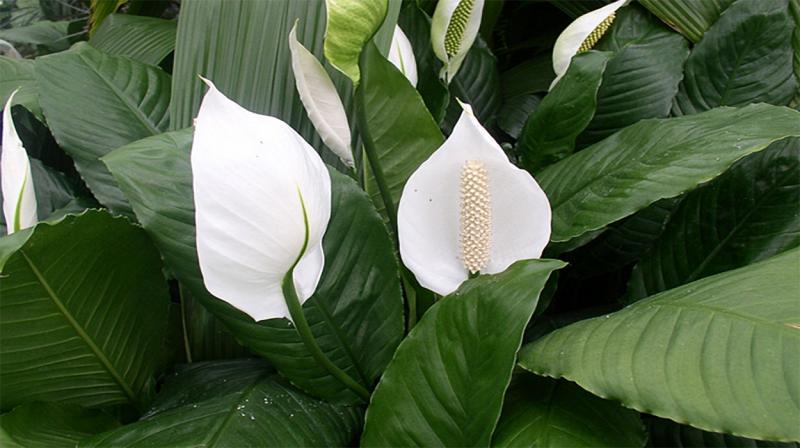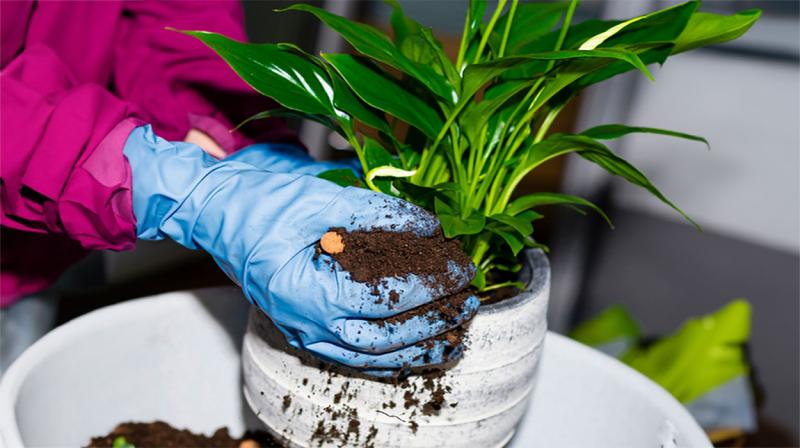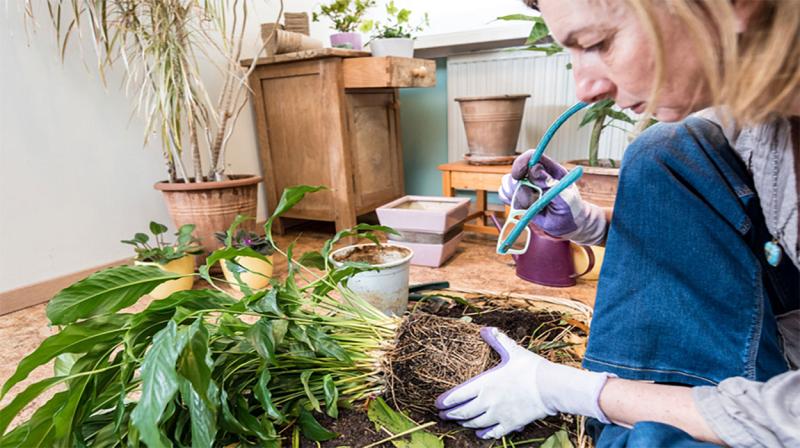Written by Cindy Schnabel under the direction and review of Kristine Lang and Sydney Trio.
Description

The Peace Lily (Spathiphyllum sp.) is a gorgeous house plant. It is known as the closet plant, because it does well in low-light conditions, making it a good plant for homes and offices.
It is a tropical, evergreen plant native to Central and Southern America, having approximately 40 different species. The plant is a member of the family Araceae, which includes caladiums, elephant ears, and callas, making it not a true lily.
The Peace Lily has glossy, dark-green, oval-shaped leaves coming to a narrow point. The white bloom is long lasting, showy, unique in shape, and is slightly fragrant. Best of all, the Peace Lily is an easy plant to grow for a novice and expert.
Plant Care

- Soil: The plant prefers well-drained potting soil. It often tends to get rootbound. You will know when to transplant if you see roots appearing through the drainage holes or can see the roots circle the top of the soil.
- Water: Use room-temperature water that has sat out overnight. Sitting overnight will allow the chlorine in the water to evaporate. The soil should be kept moist, but not soggy. Slightly allow the soil to dry a bit between waterings. Do not let the plant sit in water, because will cause root problems.
- Light: Bright, indirect light is the best. It mimics the shade it grows in its normal habitat. An east-facing window, which gets morning light, or a north window would be an ideal location.
- Temperature: Place in a location that is 65 to 80 degrees Fahrenheit. Avoid any area that is 55 degrees Fahrenheit or lower. The plant will die if exposed to cool temperatures for a long time.
- Fertilizer: Fertilize in the spring and summer using an organic fertilizer. Organic fertilizer works better, because Peace Lilies are very sensitive to chemicals.
Problems and Solutions

- Root and stem diseases can occur if the plant is being overwatered.
- Pests include scales, mealybugs, and fungal gnats, which all feed on the Peace Lily.
- Brown tip leaves are caused by excessive light, over-fertilizing, low water, or low humidity.
- Yellow leaves will occur if it is overwatered or underwatered.
- Older leaves will yellow if the plant has not been repotted in a while.
- Drooping or wilting leaves happen when it is not receiving enough water.
Important: An important fact about the Peace Lily is that it is mildly toxic. All parts of the plant contain calcium oxalate. This may cause stomach or respiratory irritation if consumed in large amounts. For this reason, it is advised to keep small children, cats, and dogs from chewing on the plant.
References and Resources
- Spathiphyllum (Peace Lily), N.C. Cooperative Extension.
- Peace Lily, Clemson University Cooperative Extension.
- Care of Peace Lilies, SDSU Extension.


